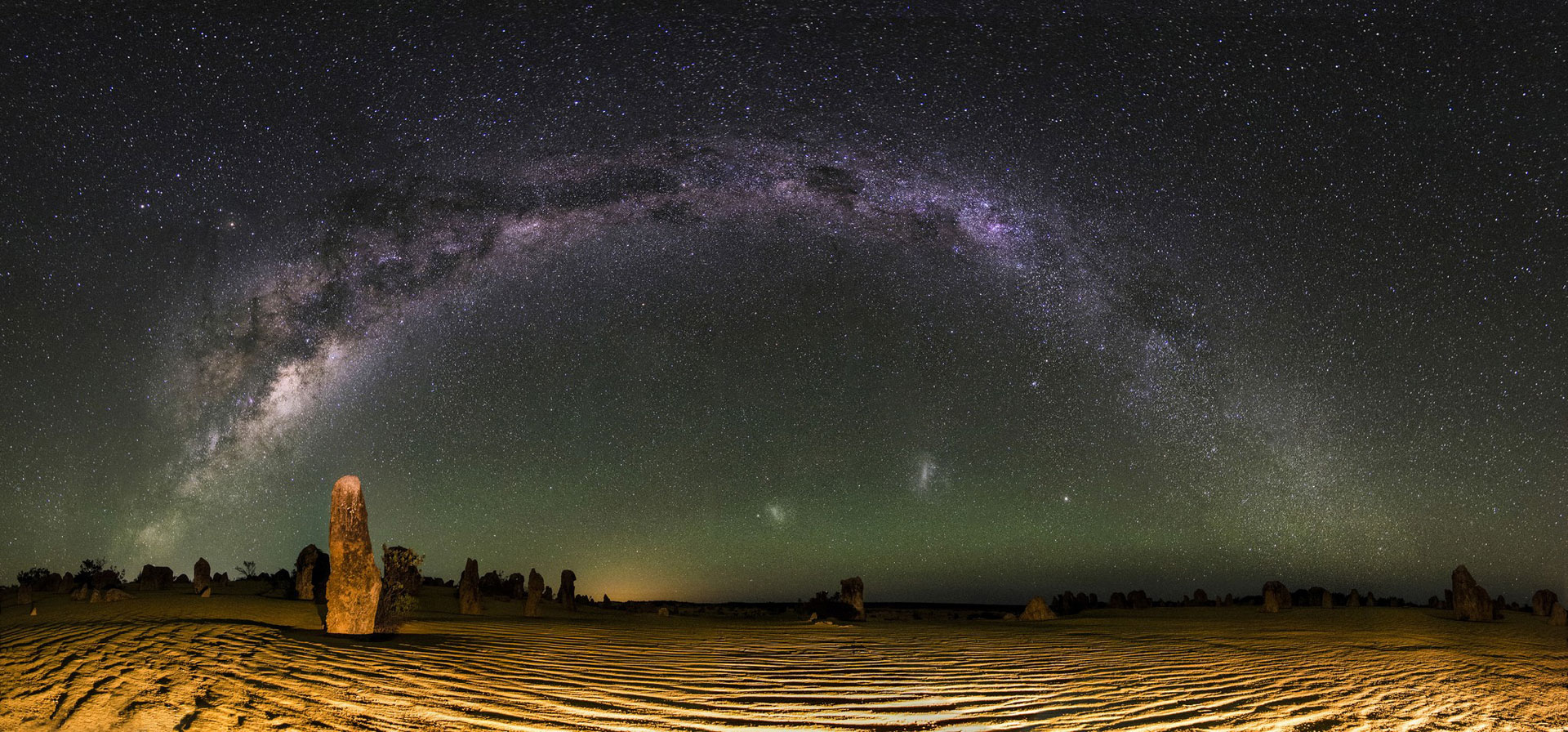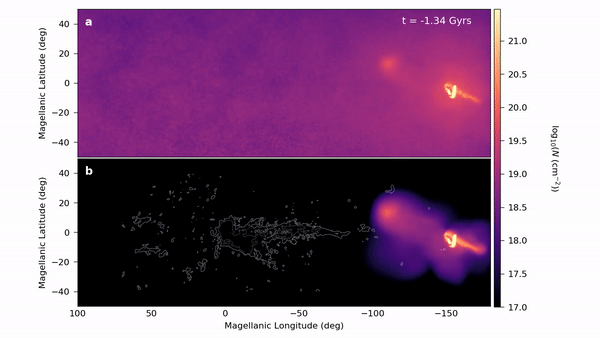The final Monthly Media for 2020 is from Prof. Joss Bland-Hawthorn from our University of Sydney node. Joss and ASTRO 3D affiliate A/Prof. Elena D’Onghia co-authored a paper that unraveled some of the mysteries of how our own Milky Way (MW) galaxy and it’s two largest satellite galaxies play together, using computer simulations.
On a clear night away from human lights in the Southern Hemisphere, where ASTRO 3D is lucky to call home, we can not only see our own MW galaxy stretching from horizon to horizon, but we are also able to see two dwarf galaxies that orbit our own (as in the picture below). These are called the Large and Small Magellanic Clouds (LMC and SMC). To our eyes they look like they could be completely separate from the MW, but in reality they are connected.

The Milky Way arcing across the sky above the Pinnacles, Western Australia. The Magellanic Clouds are near the centre just above the horizon, the Small Magellanic Cloud on the left and the Large Magellanic Cloud on the right. Image credit: inefekt69/Flickr
Billions of years of interactions have stripped gas, which does not shine bright like stars, from our companion galaxies in huge streams. With recent discoveries of highly ionised gas (think of it as ridiculously hot gas) around the galaxies and an updated measurement of the mass of the LMC, Joss, Elena and their collaborators have been able to accurately model the interactions of the three galaxies to match what we see today.

Simulation of the Magellanic Streams overlaid over a photo of the Milky Way. Credit: Colin Legg and Scott Lucchini
Much like how long hair flows out behind a cyclist, caught by the air they’re moving through, the ionised gas around the MW helps to make the gas from the Magellanic Clouds (MC’s) to stream behind them. It’s surprising there’s any gas left, but the dwarfs are surrounded by ionised gas as well that partly protects the gas streaming away, and slows down the rate of gas loss. The dominant stream of gas (called the Magellanic Stream) suggests that the MC’s are still in their first orbit of our MW galaxy.

Simulation of the Milky Way and Magellanic Cloud gases over the last 1.34 billion years. The top panel shows the gases from the MC and the MW, and the bottom panel shows only the gas originating from the disk of the MC.

Comparison of current day observations (left) to simulations of the last 550 million years (right) of the orbit of the Magellanic Clouds. The colours indicate the line of sight velocity – how fast the gases are moving towards or away from where we are observing (ignoring sideways motion). This simulation does well in explaining current observations of the interactions between the galaxies.
Like all the best scientific discoveries, it asks more questions than it answers, in the form of predictions. The authors predict that the highly ionised gas will affect Ultra-Violet (UV) light from extremely distant, bright and old galaxies known as Quasars, that are partially hidden behind the MC’s. As the light from those distant Quasars passes through the ionised gas, they predict some of the UV light will be blocked, creating what’s called absorption lines. This should be visible to the Cosmic Origins Spectrograph which is part of the Hubble Space Telescope, so be sure to keep an eye out for that research in the future!
This was really fun to read. It just makes me think of cross pollination. Im just a dad with a history degree, who reads about Space to his 4 year old son. Thanks for sharing the info.
Glad you enjoyed the article! Maybe we’ll see your son (or you!?) in our classes one day. You’re never to young or old to learn some astrophysics 😉